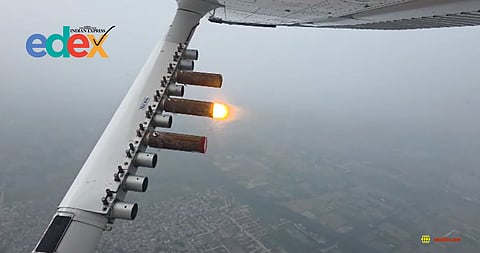

In a region where agriculture, commerce, and culture have been shaped by monsoon rains for millennia, artificially induced precipitation is bound to be seen as a spectacle just short of a miracle. So all eyes were on the national capital’s first cloud-seeding experiment this Tuesday.
With help from the Indian Institute of Technology (IIT) Kanpur, the Delhi government used a light aircraft to seed clouds with chemical agents that stimulate moisture formation. A sum of Rs 3.2 crore was allotted for five trials aimed at measuring whether the technology could effectively disperse airborne particles.
When the underwhelming rainfall hardly made a dent in the hazardous brown dome hovering over Delhi, the sub-optimal moisture level was blamed. No further trial has since been announced after the first one, comprising three sorties.
Three key questions
One could argue the timing was appropriate—this year recorded the highest post-Diwali spike in particulate matter of 2.5 micrometres or smaller in Delhi’s air.
However, the trial triggered three commonsensical questions. First, if pollution spikes again just a day or two after the induced rain—as it did in Delhi, what is the point of incurring such a cost?
Second, if the technology depends so directly on weather conditions, how can it be relied upon when needed?
And third, what is the effect of such unseasonal rain on the crop fields that dot the national capital territory’s fringes?
Lessons from elsewhere
The technology isn’t new. Karnataka, Maharashtra, Andhra Pradesh, and Gujarat have already experimented with it, to battle drought, not pollution; yet none has persisted with it. Indeed, cloud-seeding can only be a short-term solution at an opportune moment, if at all.
To reduce Delhi’s pollution for good, we need to learn from what China did after 2008, when it used the method to clear the skies for the Beijing Olympics. While setting an ambitious target, it included all provinces neighbouring Beijing, moved quickly away from coal and diesel, and boosted electric-vehicle sales and the urban rail network.
In sharp contrast, India, which undertook the photogenic trial after denying the previous Delhi government’s repeated request for it, has been caught sprinkling water near pollution sensors to falsely suppress the air-quality index.
The solutions aren’t unknown to policymakers. However, nothing effective can be expected until we stop managing the optics and start going after the causes.
